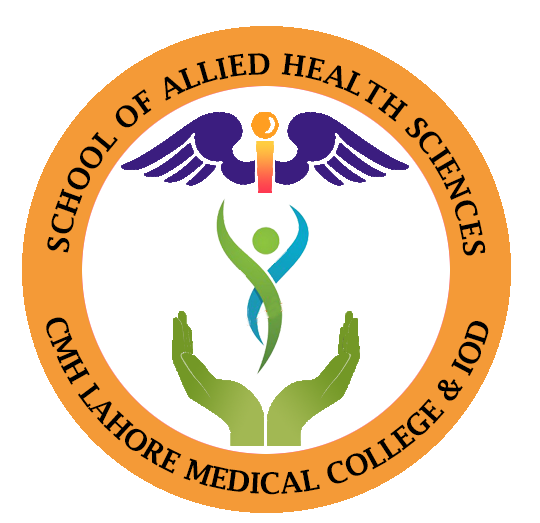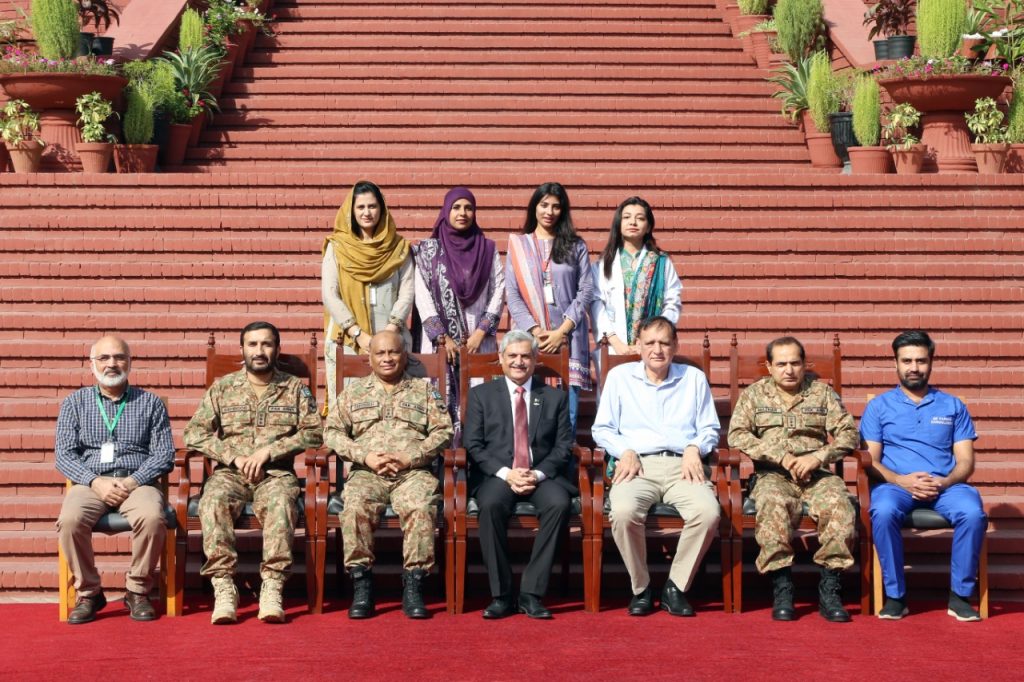Brief Introduction of Program
Medical imaging developed rapidly to play a central role in medicine today by supporting the diagnosis and treatment of a disease. It encompasses technologies like ultrasonography, x-rays, mammography, computed tomography (CT scans), MRI, Dexa-Scan, and nuclear medicine. Diagnostic imaging services are essential in confirming, assessing, and documenting the course of many diseases and response to treatment. It is a multi-dimensional field that is not only confined to conventional imaging techniques but with the advancement in technology, there has been an ever-increasing emphasis on post-processing, and newer and more advanced ways of sharing and storing medical images.
Sitting (L to R): Dr Sajid Zaheer Bhatti, Col Mehboob Sultan, Brig Farrukh (HOD Radiology) Brig Chaudhary Fayyaz Mahmood (R) (Director SAHS), Brig Tariq Mahmud Mirza (R) (HOD MID/MIT), Col Mazhar Shafiq, Dr Muhammad Farhan
Standing (L to R): Ms Fatima Batool, Ms Shakeela Rasheed, Ms Zunaira Rafaqat, Dr. Fozia Hussain
The purpose of medical imaging technology is to prepare medical imaging technologists who will:
- Be equipped with relevant professional knowledge, skills, techniques, and ethical values that will enable them to apply their acquired expertise according to the scope of the profession for efficient health service delivery.
- Develop good leadership, problem-solving, and administrative skills and analyze innovative strategies for effective communication with the patients and the healthcare personnel.
- Demonstrate interdisciplinary team-building strategies for effective coordination between various Allied Health Disciplines.
- Creatively find researchable problems and incorporate research findings into clinical practice.
- Understand and place in context the social, economic, and cultural issues of practice and effectively advocate for policy changes.
- Establish and maintain continuing education as a function of growth and maintenance of professional competence.
The duration of the course shall be 4 years with structured training that will include classroom lectures, laboratory, clinical demonstrations, supervised clinical practice, and research. All professional examinations will be conducted by the University of Health Sciences. This program integrates theory, evidence, and practice with a variety of learning.
- Public Sector hospitals (Grade 17 and above jobs)
- Private Hospitals
- Research
- Academia
- Medical Technology Companies
- International Job placements
SCHEME OF STUDIES FOR 4 YEARS
MEDICAL IMAGING TECHNOLOGY (MIT) PROGRAM
Year | Subjects | Marks |
1st Year | Basic Anatomy & Basic Physiology | 100 |
Basic Biochemistry & General Pathology | 100 | |
Behavioral Sciences & Computer Education | 100 | |
Islamic (Ethics) & Pakistan Studies (marks not included) | 100 | |
300 | ||
2nd year | Regional and Imaging Anatomy | 200 |
Radiation Science and Technology | 200 | |
General Radiology | 200 | |
Medicine | 200 | |
Clinical Pharmacology | 100 | |
Biostatistics | 50 | |
1000 | ||
3rd year | Mammography & Special Radiological Techniques | 200 |
Ultrasound & Echocardiography | 200 | |
Nuclear Medicine | 200 | |
Angiography & Cardiac Imaging | 200 | |
Surgery | 100 | |
900 | ||
4th year | Computed Tomography (CT) | 200 |
Magnetic Resonance Imaging | 200 | |
Research Methods & Project | 100 | |
Medical Sociology | 100 | |
600 |


